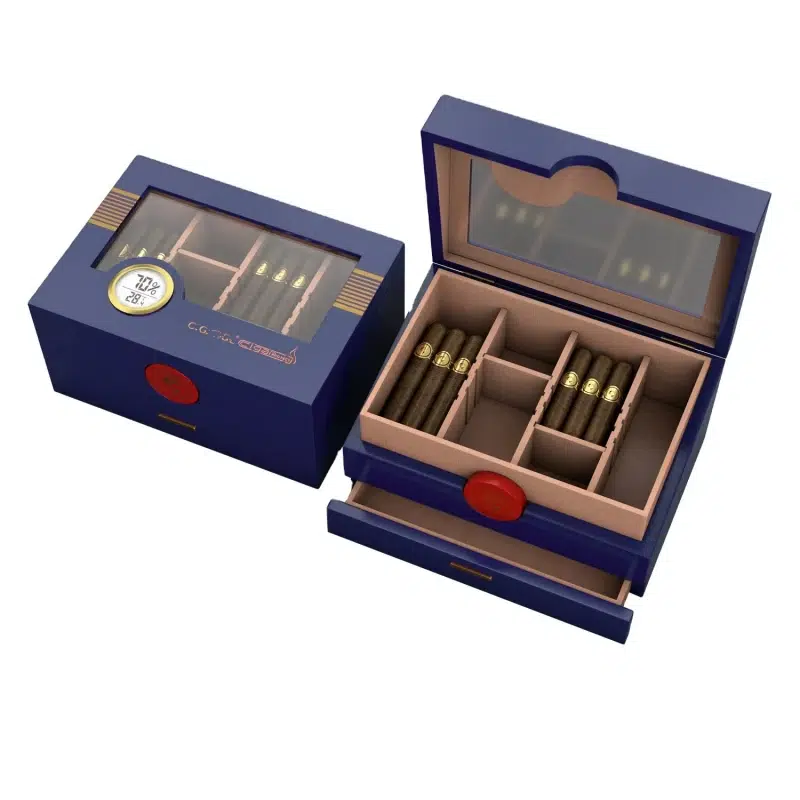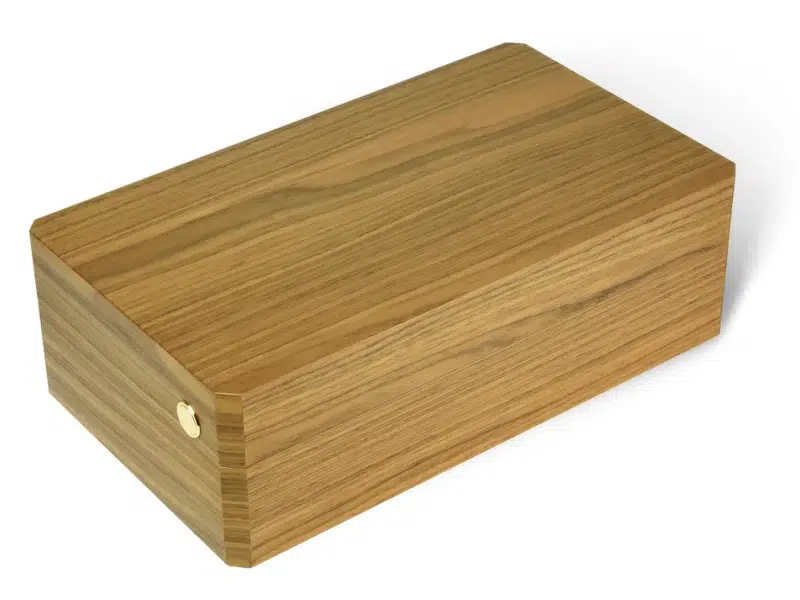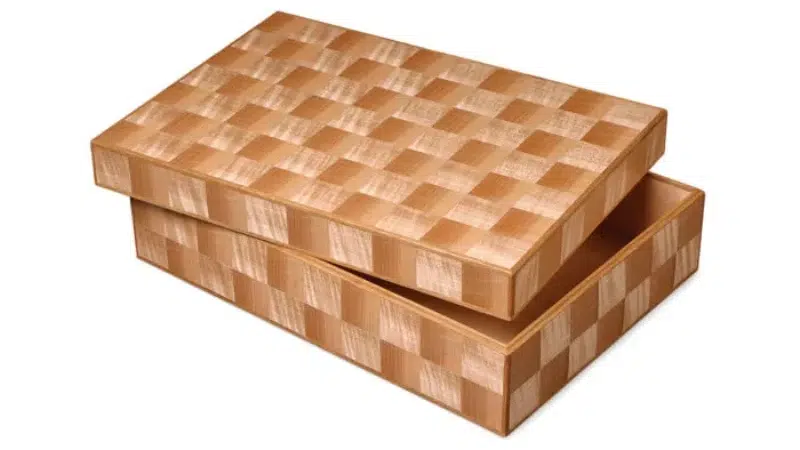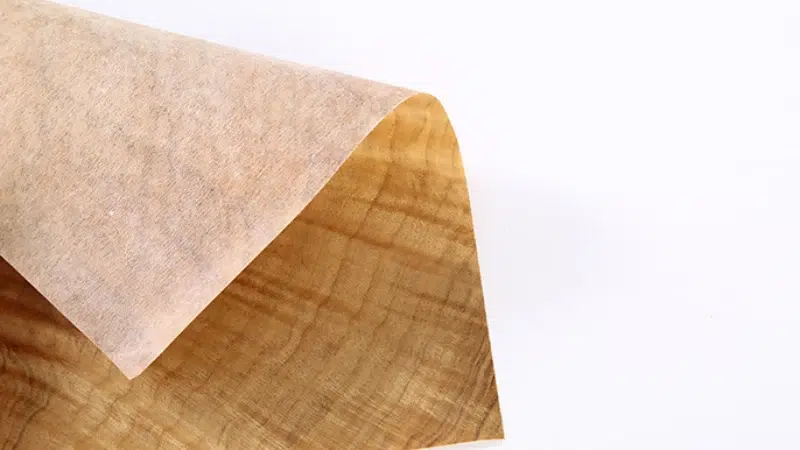
Ordering a small batch of custom cigar boxes might feel flexible—but it often comes at a much higher per-unit cost than bulk orders.
Higher MOQs help reduce unit pricing by spreading setup, labor, and logistics costs across more boxes.
Why do larger order volumes reduce the cost per unit in custom cigar box production?
Cigar box production includes fixed costs such as:
- Machine calibration
- Tooling setup
- Design file preparation
- Quality control routines
These costs stay constant regardless of whether you’re producing 100 or 1,000 units1.
For example, if a setup cost is $500:
- In a 100-unit order, that’s $5 per box
- In a 1,000-unit order, it drops to $0.50 per box
Larger MOQs2 allow these non-variable costs to be absorbed more efficiently.
كيف setup costs3 like tooling and prototyping impact small vs. large orders?
Custom cigar boxes often require:
- CNC molds4 for wood components
- Laser engraving or stamping plates
- Paint or lacquer calibration
- Foam or insert die-cut tools
Each of these must be made before production begins, regardless of order size. Small orders struggle to justify these costs because:
- Tooling might cost more than the order itself
- Prototype revisions are harder to amortize
Bulk orders make setup investments worthwhile by reducing their cost impact per unit.
Wood, veneer, lining materials, and hardware are often priced by the sheet, roll, or kilo—not per piece.
With larger MOQs, suppliers can:
- Purchase materials in larger, discounted quantities
- Optimize panel cuts to minimize waste
- Use full sheets/rolls rather than partial ones
| Order Size | Veneer Usage Efficiency | Material Cost per Box |
|---|---|---|
| 100 pcs | Low (higher scrap rate) | أعلى |
| 1,000 pcs | High (bulk-cutting) | أقل |
Material waste adds cost—but large MOQs make sourcing more efficient and predictable.
How does labor allocation become more cost-effective with higher MOQs?
Skilled labor in cigar box production includes:
- Precision sanding
- Hand assembly
- Finishing and polishing
For small runs, labor teams face:
- Frequent task-switching
- Downtime during retooling
- More inspection and adjustments
Larger batches allow for repeatable workflows7, which means:
- Less time lost between jobs
- Faster training for repeated processes
- Easier quality control scaling
The smoother the production flow8, the lower the labor cost per unit9.
Why do packaging and shipping logistics benefit from bulk orders?
Shipping a small number of cigar boxes often means:
- Higher freight cost per unit
- Extra protective materials for partial loads
- Unused carton or container space
Large orders:
- Fill cartons, pallets, or even full containers
- Allow for better packaging consolidation10
- أقل freight cost per box11
Additionally, international buyers can reduce customs, brokerage, and port handling fees by consolidating shipments.
MOQ12 isn’t just about production—it also improves logistics cost-efficiency.
How can negotiating better unit pricing be tied to meeting supplier MOQ thresholds?
Suppliers often quote prices based on volume tiers13 like:
- 100 pcs
- 500 pcs
- 1,000 pcs
- 2,000 pcs+
Each tier typically unlocks:
- Better per-unit pricing
- Access to free or discounted customization options14
- Priority production scheduling
Buyers who commit to MOQs often gain leverage in negotiation15—for example, securing:
- Free engraving setup
- Better foam inserts
- Reduced mold or die-cut fees
Meeting MOQ unlocks both cost and value benefits.
اسم العلامة التجارية: وودوبوكس
الشعار: صناديق خشبية مصممة حسب الطلب، مصنوعة بإتقان
الموقع الإلكتروني: www.woodobox.com
-
Understanding how order volume impacts costs can help businesses optimize their production strategies and pricing. ↩
-
Exploring the advantages of larger minimum order quantities can lead to significant cost savings and efficiency in production. ↩
-
Understanding setup costs can help businesses optimize their production strategies and pricing models for different order sizes. ↩
-
Exploring CNC molds can provide insights into efficient manufacturing processes and cost-saving techniques for custom orders. ↩
-
Understanding material sourcing efficiency can help you grasp how it impacts pricing strategies and cost savings in bulk orders. ↩
-
Exploring MOQ-related pricing will provide insights into how minimum order quantities influence costs and supplier relationships. ↩
-
Understanding repeatable workflows can help optimize production efficiency and reduce costs, making it essential for businesses. ↩
-
Exploring the relationship between production flow and labor costs can provide insights into cost-saving strategies for manufacturers. ↩
-
Learning about the factors affecting labor cost per unit can help businesses identify areas for improvement and cost reduction. ↩
-
Exploring this resource will provide insights into how better packaging consolidation can enhance efficiency and reduce costs in logistics. ↩
-
This link will help you understand strategies to minimize freight costs, crucial for improving overall logistics efficiency. ↩
-
Understanding MOQ is essential for optimizing production and logistics, making this resource invaluable for businesses looking to improve efficiency. ↩
-
Understanding volume tiers can help you negotiate better pricing and terms with suppliers, maximizing your purchasing power. ↩
-
Exploring customization options can enhance your product offerings and improve customer satisfaction, making it a valuable resource. ↩
-
Learning about negotiation leverage can empower you to secure better deals and strengthen your supplier partnerships. ↩





